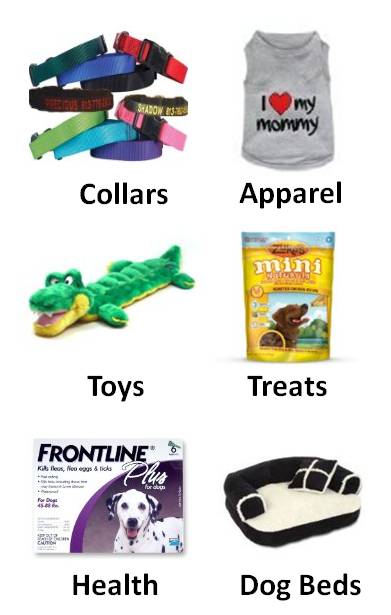Help for Fear Biting Dogs
Fear biting dogs are just that - dogs that react with a bite when they become fearful or scared. Usually these dogs are very sweet and submissive, but when panic sets in, lookout....
they release the Cujo inside!

That being said, most of these dog bites are totally the fault of the human involved. When a dog appears timid and shy or nervous, sometimes a well-meant person tries to go over and comfort the dog in order to prove there is nothing to be afraid of. But that is exactly what one shouldn't do and the very thing that causes the dog to react with a snap or bite.
To the dog, the situation of an approaching stranger is too much to handle and he basically freaks out. Sheer panic sets in and he reacts with a bite. Therefore, always pay close attention to the warning signs a fearful dog may be exhibiting.
Body Language of a Fearful Dog
When a dog is fearful he will display certain characteristics such as:
- tucking in his tail
- hunching or crouching down
- turning his head away or avoid making eye contact
- his ears may become flat against his head
- the whites of his eyes show
- some dogs tremble
- and some even urinate out of fear
Their stance and appearance is clearly one of worry and fear.

Here is a photo of a dog lacking in confidence and one that is obviously scared.
You
can see how his back is slightly arched and his tail is down. He is
also looking cautiously up at whatever it is frightening him, as his
ears flatten down beside his head.
So how does this fearful behavior start to begin with? Some dogs are
just born shy and timid; some are more prone to anxiety because of their
breeding or genetic blueprint; and yet others may have been spooked by
something or someone as a puppy causing a life-long phobia to develop.
And unfortunately, some develop fearfulness as a direct result of
unpleasant past experiences with abuse or abandonment issues.
note: It is important to mention that just because a dog is shy, it does not mean he will turn into a fear biter. A dog's shyness only becomes a problem when he can no longer be trusted around others.
From a human perspective, I think fear biting is similar to what we call panic attacks. Although humans do not cope by biting, one suffering from a panic attack brought about from intense terror and apprehension may bring about shaking, trembling, difficulty breathing and the like, requiring treatment involving intense psychotherapy and medications in order to cope and try to overcome their fears.
Training Fear Biting Dogs
So how can you help your fearful dog? A fearful dog needs lots of confidence-building and reassurance. You will need to work on this daily with lots of patience, persistence, consistency, using praise and rewards, in order to help your dog.
And please keep in mind during this process, the very worse thing you can do is try and force a fearful dog to accept a situation or person or include any harsh punishment in their training. This will only make the dog more fearful and exasperate the situation. And unfortunately, some dogs will remain fearful throughout all the days of their lives, no matter how much training they receive. But you can still make an impact and even the smallest behavioral change to a fear will make your dog's life and yours better.
So, although you cannot train a scared dog not to bite, you can help him reduce his overall anxiety and tension by building up his confidence. Once his confidence is stronger you can begin to desensitize him to the fearful triggers.
Obedience training is a good way to start building your dog's confidence. During your training sessions be sure to set your dog up for success (ie. start off with easy commands) and only proceed when he is thoroughly comfortable and has mastered the task at hand. (see basic dog commands: sit, stay, come, heel, down).
Once your dog is a bit more confident, begin to work on desensitizing him to the fearful triggers. It is crucial that you take this slowly in order to be successful. Again forcing a situation or moving your dog along at a pace he is not comfortable with, will only make things worse. The aim of desensitization is to keep your dog as calm and happy as possible when he is faced with his fear. In other words, you should put your dog in situations that are only mildly uncomfortable for them but never panic-provoking.
This process of exposing him to his fear in a safe, comfortable way, needs to be included in your dog's everyday life until he becomes desensitized to it. Next add counter-conditioning which teaches your dog to associate good things with his fear. You can do this by using positive reinforcements like praise and treat rewards for their non-reactive behavior to their fear. The ultimate goal is for the fearful dog to be relaxed around the fearful trigger.
• Desensitization: Process of making a dog calm and comfortable with a fear stimulus.
• Counter-Conditioning: Teaching a dog to re-associate a previously negative stimulus with something positive.
Conclusion:
It takes lots of time and patience and someone who is really dedicated to improving (and hopefully overcoming) their dog's fear and anxiety to stressful situations in order to become successful.
Fear biting dogs need exposure and socializing on a daily basis. Just be sure you are always in complete control over your dog. The more opportunities a fearful dog has to be around strangers and new situations, the less likely he will respond to them. Always be sure to talk in a relaxed, calm, yet direct way to keep your dog assured during this process. Also, be sure to never coddle your dog when facing his fears and this will only reinforce it by making him feel as there really is something to be worried or fearful about.
Also besides training and confidence building, including other types of calming aids throughout the day can also help your dog stay calm and relaxed. You can implement the use of a DAP diffuser, that releases natural calming pheremones that have proven to help relax dogs, a dog relaxation music and always be sure to include lots of daily exercise.
All of these things along with a healthy diet and continuous training will build your dog's confidence making him better prepared to handle new experiences.
Help For Fear Biters | ||
 |  |  |
Don't Wait. Start Training Your Dog Right Now!
Dog Training Series
• Dog Training Tips
• Dog Training Aids
• Positive Reinforcement Training
• Puppy Training
• Dog Obedience Training
• Fun Dog Tricks
• Advanced Dog Trick Training
• Cool Dog Tricks
• Teach Dog Hand Signals
• CGC Training Test
• Your Training Questions
"Knowledge Share"... If you found this article helpful and informative please share it with your dog-loving friends by clicking on one of the share links at the top right or bottom of this page.
Search Schnauzers-Rule.com

Go from Fear Biting Dogs to About the Miniature Schnauzer on Schnauzers Rule
Go from Fear Biting to Dog Massage
Related Topics:
★ Help for Dogs that Fear Thunderstorms
★ Ease Dog Anxiety and Fear of Fourth of July
★ Miniature Schnauzer Health
Hide a Squirrel
Schnauzer Tested and Approved Dog Toy: Hide a Squirrel on AMAZON
GET HEALTHY
Great deals on vitamins for your pet!
Note: I earn a small commission from qualifying purchases.
Veterinary Strength Shampoo for Dogs
helps destroy bacteria and fungi that cause skin infections
and Schnauzer Bumps
Mini Schnauzer Family Sun Shade for your car's windshield. So dang cute

Dog Training Series
• Dog Training Tips
• Dog Training Aids
• Positive Reinforcement Training
• Puppy Training
• Dog Obedience Training
• Fun Dog Tricks
• Advanced Dog Trick Training
• Cool Dog Tricks
• Teach Dog Hand Signals
• CGC Training Test
• Your Training Questions
Schnauzers Rule on Zazzle

Schnauzers Rule Zazzle Shop
Be sure to visit our Zazzle store. We have lots gifts for Miniature Schnauzer Lovers including T Shirts, Stickers, Home Decor items and more. Got Schnauzer?
Special Promotional Offers

Check out all the cute dog customers on AMAZON
Amazon purchases through affiliate links, earn me a small commission








New! Comments
Have your say about what you just read! Leave me a comment in the box below.